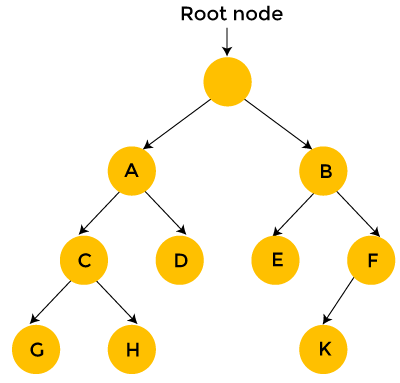Brute force approachA brute force approach is an approach that finds all the possible solutions to find a satisfactory solution to a given problem. The brute force algorithm tries out all the possibilities till a satisfactory solution is not found. Such an algorithm can be of two types:
Let's understand the brute force search through an example. Suppose we have converted the problem in the form of the tree shown as below: 
Brute force search considers each and every state of a tree, and the state is represented in the form of a node. As far as the starting position is concerned, we have two choices, i.e., A state and B state. We can either generate state A or state B. In the case of B state, we have two states, i.e., state E and F. In the case of brute force search, each state is considered one by one. As we can observe in the above tree that the brute force search takes 12 steps to find the solution. On the other hand, backtracking, which uses Depth-First search, considers the below states only when the state provides a feasible solution. Consider the above tree, start from the root node, then move to node A and then node C. If node C does not provide the feasible solution, then there is no point in considering the states G and H. We backtrack from node C to node A. Then, we move from node A to node D. Since node D does not provide the feasible solution, we discard this state and backtrack from node D to node A. We move to node B, then we move from node B to node E. We move from node E to node K; Since k is a solution, so it takes 10 steps to find the solution. In this way, we eliminate a greater number of states in a single iteration. Therefore, we can say that backtracking is faster and more efficient than the brute force approach. Advantages of a brute-force algorithmThe following are the advantages of the brute-force algorithm:
Disadvantages of a brute-force algorithmThe following are the disadvantages of the brute-force algorithm:
Next TopicFractional vs 0/1 knapsack problem
|
 For Videos Join Our Youtube Channel: Join Now
For Videos Join Our Youtube Channel: Join Now
Feedback
- Send your Feedback to [email protected]
Help Others, Please Share









